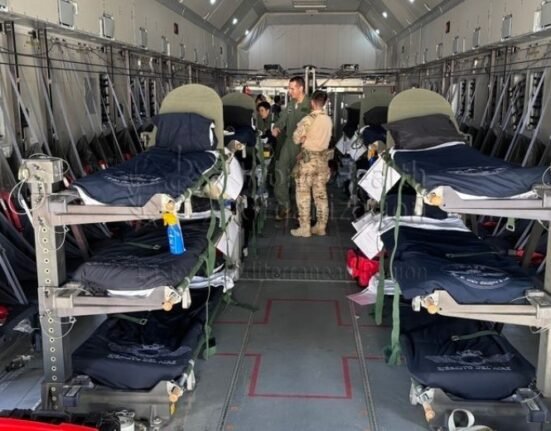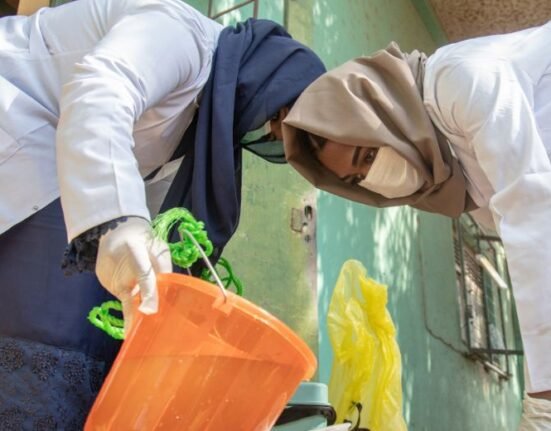HQ Team
July 17, 2023: Migratory flows have fanned the Chagas disease, and a study of 2,820 people from the countries where it is an endemic, revealed that 47% were infected by the parasite and 17% had heart lesions.
Chagas disease, also known as American trypanosomiasis, is a potentially life-threatening illness caused by the protozoan parasite Trypanosoma Cruzi.
About seven million people worldwide are estimated to be infected with the parasite.
The disease is found mainly in endemic areas of 21 continental Latin American nations, where it has been mostly transmitted to humans and other mammals by contact with faces or urine of triatomine bugs (vector-borne), known as kissing bugs.
It is also transmitted orally (food-borne), through blood/blood products, mother-to-child (congenital) transmission, organ transplantation, and lab accidents, according to the WHO.
Mother-to-child
In non-endemic countries, the parasite can be transmitted vertically, from mother to child, or, less commonly, through blood or organ donations. In about 40% of the cases, the infection ends up damaging the heart and the digestive system, causing Chagas disease.
The study was done by the International Health Service at Barcelona’s Hospital Clinic, over a 17-year period. It was published in PLOS Neglected Tropical Diseases.
The parasite has spread globally through migratory flows, according to the study, which was done on one of the largest samples of people at risk of infection in a non-endemic country.
“It is therefore recommended that Latin Americans arriving in the country be tested in order to treat them if they are infected and, in the case of women of childbearing age, to prevent the vertical transmission of the parasite,” said Irene Losada, coordinator of the Chagas Initiative and first co-author of the study.
The authors wrote that many people arriving from highly endemic regions of Latin America, such as Bolivia, had never been tested before.
Chagas disease was once entirely confined to continental rural areas of the Region of the Americas — excluding the Caribbean islands.
Due to increased population mobility over previous decades, most infected people now live in urban settings and the infection has been increasingly detected in the US, Canada, and many European and some African, Eastern Mediterranean, and Western Pacific countries.
Under-diagnosed in Spain
“The infection is clearly under-diagnosed even in Spain, one of the European countries with the highest diagnostic coverage,” warns Maria Jesús Pinazo, last author of the study, a former researcher at ISGlobal, and currently at DNDi.
Although in most cases an electrocardiogram was sufficient to detect the lesions, an echocardiogram was needed in 10% of cases.
“These results reinforce the importance of echocardiograms in the initial assessment of patients with T. cruzi infection,” said Pedro Laynez-Roldán, ISGlobal researcher and physician at the Clínic’s International Health Service.
Trypanosoma cruzi infection is curable if treatment is initiated soon after infection. In chronic patients, antiparasitic treatment can potentially prevent or curb the disease progression and prevent transmission, for instance, mother-to-child infection.
Up to a third of chronically infected people develop cardiac alterations and one in ten develop digestive, neurological or mixed alterations which may require specific treatment.
Vector control
Key strategies to prevent Chagas disease include vector control (in Latin America); screening of blood, blood products, and organs prior to transfusion and transplantation, testing and treating girls, women of reproductive age, newborns, and siblings of infected mothers without previous antiparasitic treatment.
The kissing bug typically live in the wall or roof cracks of homes and peri-domiciliary structures, such as chicken coops, pens, and warehouses, in rural or suburban areas.
Normally they hide during the day and become active at night when they feed on animal blood, including human blood. They usually bite an exposed area of skin such as the face — hence its common name, kissing bug, and the bug defecates or urinates close to the bite.
Eyes, mouth
The parasites enter the body when the person instinctively smears the bug’s feces or urine into the bite, other skin breaks, the eyes, or the mouth.
The first visible signs can be a skin lesion or a purplish swelling of the lids of one eye. Additionally, they can present fever, headache, enlarged lymph glands, pallor, muscle pain, difficulty in breathing, swelling, and abdominal or chest pain.
During the chronic phase, the parasites are hidden mainly in the heart and digestive muscles. One to three decades later, up to a third of patients suffer from cardiac disorders and up to one in 10 suffer from digestive — enlargement of the oesophagus or colon — neurological or mixed alterations.
In later years the infection in those patients can cause the destruction of the nervous system and heart muscle, consequent cardiac arrhythmias or progressive heart failure and sudden death.
There is no vaccine to prevent Chagas disease. Vector control has been the most effective method of prevention in Latin America.








